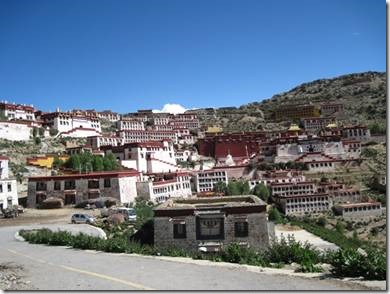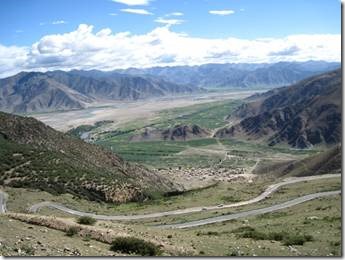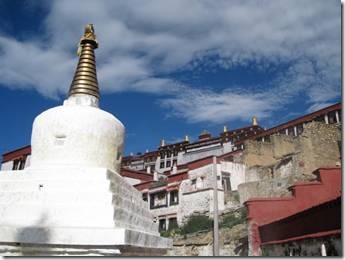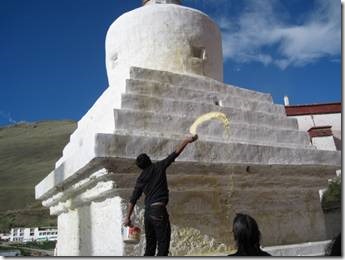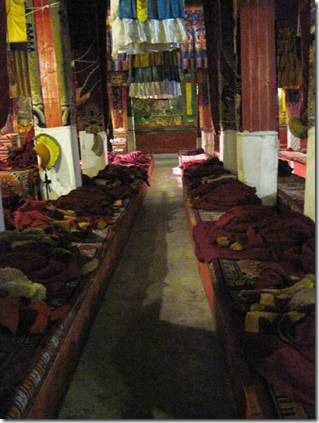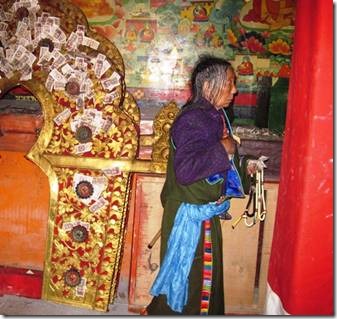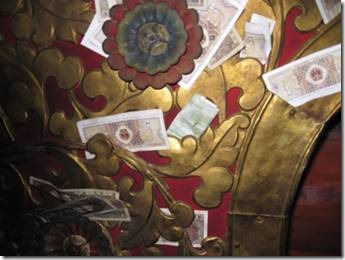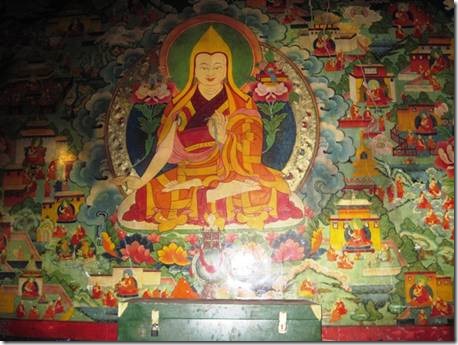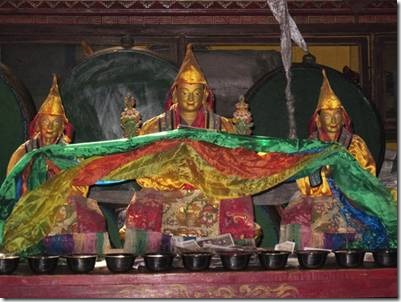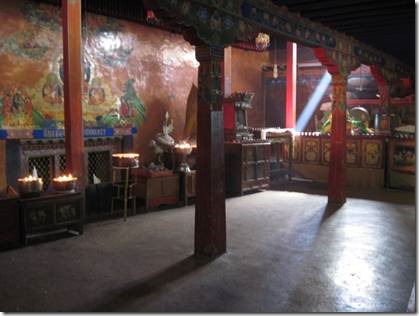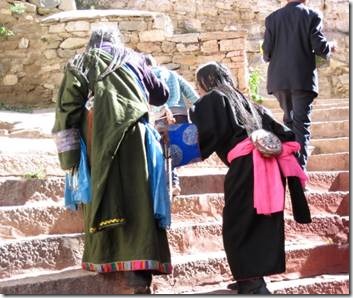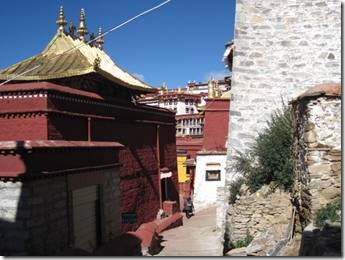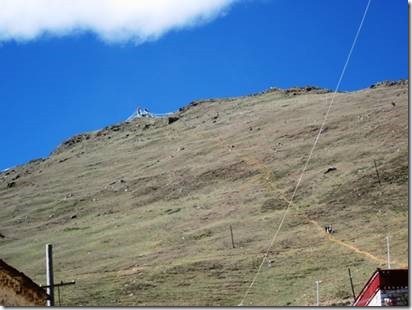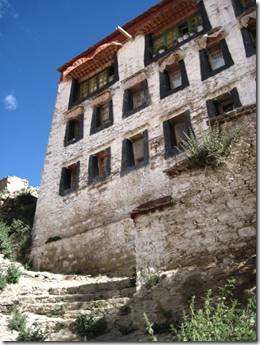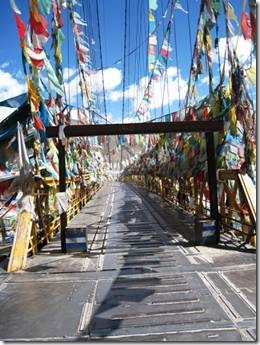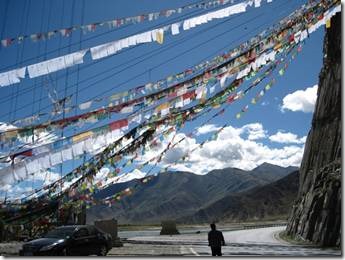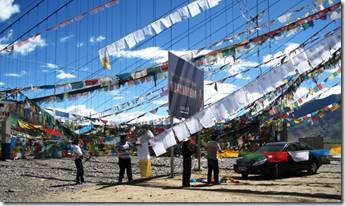Puteri Harbour Marina
Johor, Malaysia
Randal and I visited lots of monasteries in Tibet and Nepal. Each was interesting in its own way. I think my favorite was actually the Tsamkhung Nunnery in the center of Lhasa because the nuns were so sweet and open and active; much more so than most of the monks we saw. Because we stayed mostly around Lhasa, that’s why we saw so many monasteries which I guess were located near the big city. And I’m writing about things in the order that we did them so it will be a bit before you get to see me patting the yak or the photos of us at Mount Everest.
Ru
DoraMac
Tibet # 6 Ganden Monastery
Randal and I visited several monasteries. To me, they were all pretty similar on the inside with similar images of Buddhist characters and Lamas. I hardly know how to write about it because I really know too little and everything would probably need follow up corrections. Ganden was our first monastery and the drive along the river and up into the mountain was wonderful. I’ve sent some of those photos earlier. Again, in hind sight it would have been nice to have spent more time just sitting somewhere on the mountain and reading or maybe painting or attempting the hike to the very top of the mountain.
“Ganden Monastery, a holy land which Buddha once predicted, is the central monastery of the Gelug sect of Tibetan Buddhism. It was built in 1409 under the supervision of Zongkapa (Tsongkhapa.) Major constructions in the monastery, which cover an area of 150,000 square meters, include the Tsokchen Hall, Yangbachen Hall, Zhacang’s Buddhist College, dozens of Kangtsens. Garden also includes a statue of Sakyamuni, the gold throne, Chitokang (the bed chamber of Zongkapa,) and the cave where Zongkapa cultivated himself according to his religious doctrine. A large number of pilgrims are attracted by many naturally formed manifestations of Buddha, the lush shrubbery and the beautiful sceneries surrounding Ganden Monastery. In 1961, Ganden Monastery became a national cultural relic protection unit.” Info from the back of the entry ticket to Ganden Monastery.
Have your eyes glazed over? It’s a lot to take in. On the back of the ticket I’d written this information.
About 30 miles from Lhasa.
Located on top of Wangbur Mountain at an altitude of 12, 467 feet above sea level.
One of the great three university monasteries.
Connected to the Yellow Hat Sect, the largest sect of Tibetan Buddhism.
At one time housed up to 6,000 monks. Now there are about 300.
1959 bombed and ransacked by the Chinese.
http://en.wikipedia.org/wiki/Ganden_monastery gives what I think might be fairly accurate information and tells the sad tale of the destruction of the monastery though it has been rebuilt since that time.
Looking back down the valley from the monastery.
If we’d had all day it would have been nice to hike part way.
I believe this is called a stupa and they were visible at all of the monasteries and even at small clusters of houses through the Tibet countryside.
We weren’t sure if this is water or milk, but it’s an offering, not an attack. People had offerings of money and butter for the candles which is used instead of wax.
The Main Prayer Hall where the Monks pray. The robes are there to wear when it’s cold.
There were some pretty colorful visitors with long braids and wraps and prayer beads.
Money is inserted as offerings.
There’s my folded up small bill in the center that gave the Sox a few good days……
This mural tells a story of Buddhist history and the image of the “Yellow Hats.”
Gods, Buddhas, Lamas, Abbots…. Possibly Tsongkhapa the founder of the Yellow Hats.
Butter candles and sunlight often were the only light sources.
My pilgrim ladies again…I was more intrigued by them than by the monks or the religious symbols.
The buildings painted red are buildings that house the more religious aspects of the monastery.
Those dedicated enough hiked the path to the top of the mountain where you can see prayer flags. Not far from the red roof on the left you can see some tiny people walking up the mountain.
Lobsang pointed out a plant and Randal misunderstood and touched it. It was a nettle plant and it took days for the sting to go away. Tibetans boil the nettle plant to make tea.
On our drive home we passed a bridge covered with prayer flags
The flags stretched from the top of the mountain across the road over to the bridge on the river.
A tributary of the Yarlung Zangbo River runs through Lhasa. Near Lhasa it’s called the Lhasa River but changes its name as it passes through other parts of Tibet. It is a holy location.
On auspicious days people hang prayer flags for special occasions and for requesting all of those things people tend to ask for in their prayers. Each color, Red, white, green, yellow and blue represents a different meaning in the Tibet culture. http://www.tibetanprayerflag.com/history.html tells a bit about the flags.
I don’t think I have felt more ignorant writing up our blog. I spent all of my time looking rather than listening or learning. And each God, Buddha, Lama or Abbot seemed to have three names depending on whether it was the Indian or Tibetan. I couldn’t keep any of it straight. But it was all quite interesting. Randal wasn’t quite so intrigued by it all as I was. But I was looking at it for all of you too so that kept me more interested perhaps.

